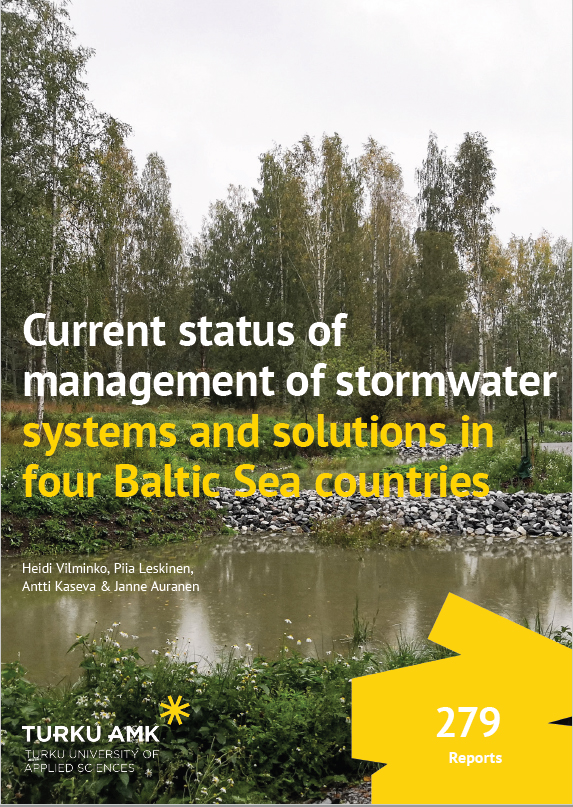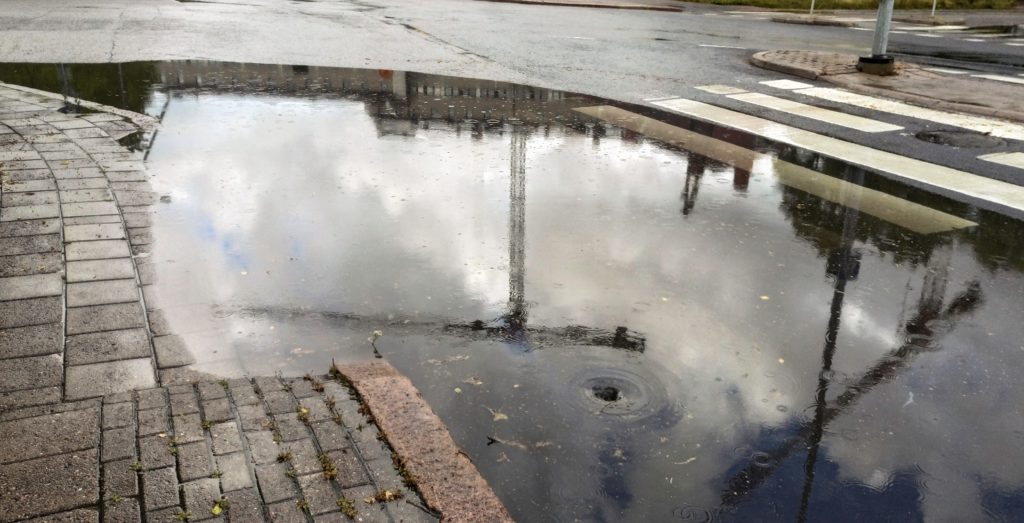Articles from publications
Wetlands implemented for treatment of stormwater on Utö
Current status of management of stormwater systems and solutions in four Baltic Sea countries – Turku University of Applied Sciences
Stormwater filtering systems are considered as promising solutions, as they alleviate both stormwater quantity and quality problems. For that reason, many cities are going to invest in different stormwater filtration systems in the coming years. However, these structures can clean pollutants from stormwater only when correctly planned, constructed, and maintained. Many municipalities lack experience and knowledge on the life cycle management and practical realization of stormwater filtering systems; thus, there is a risk that a significant part of the newly constructed systems will not function as expected.
In this report, the status of stormwater filtering structures lifecycle management in Estonia, Finland, Latvia and Sweden was introduced based on a literature review and a questionnaire targeted to municipal officers and consultants.
The literature review revealed significant differences between the ways countries manage stormwater-related issues. In some cases, the methods and best management practices for stormwater management are well established; however, for some, the regulations and guidance for overall stormwater management are still completely lacking. The questionnaire results indicate a need for better communication between the different actors and recognition of the multiple benefits provided by the stormwater filtering structures. The information gained from the literature review and the questionnaire was compiled as check list concerning the common pitfalls as well as best practices in the different phases of a stormwater filtering structure lifecycle.
These lists can be used in the different phases of the life cycle of stormwater filtering structures to guarantee well-functioning high-quality structures. This study was a part of the CleanStormWater project, funded by the Interreg Central Baltic Programme.
Greener stormwater management in the urban areas – Greetings from Turku University of Applied Sciences
Storm washes the streets of Turku. Water flows along with the asphalt towards a storm drain, under which a stormwater sewer network is waiting. The stormwater sewer conducts the ever-increasing stormwater flow towards the pipe outlet, from where the water plunges straight into urban brook Kuninkoja and eventually travels to the Baltic Sea.
With stormwater, unwanted compounds such as suspended solids, heavy metals, oil, nutrients, road salt, and debris also travel to the waterways. The situation described above is by no means exceptional, as typically, stormwater ends up directly into the water bodies, without any treatment. As a result, stormwaters increase the amount of pollutants in our water bodies and in the nature around them, while causing economic costs.
In recent years, stormwater quality management has become a key objective in urban development and new stormwater management solutions are developed all the time. Ideally, stormwater should be managed on-source, by decentralized solutions. By filtering, infiltrating, and delaying stormwater, various benefits can be achieved, such as mitigation of extreme weather conditions (e.g., flood peaks and droughts), reduction of pollutants entering water bodies, and improved water quality.
In undeveloped areas, the biological processes in the soil and in vegetation are taking care of the treatment of rainwater. By utilizing these processes, it is possible to achieve multiple benefits e.g., supporting biodiversity, improving the living conditions of pollinators, and local leveling of temperatures through vegetation.
Water and Environmental Engineering Research Group of Turku University of Applied Sciences have designed two biofiltration basins for stormwater quality management in urban areas, as part of the CleanStormWater project. Biofiltration basins are designed to utilize soil and vegetation and support the area’s blue-green infrastructure and the biota around them. For example, one of the selection criteria for the plants in the biofilter structure was that the species are local and preferred by bees and butterflies.
In addition to technical solutions, the project aims to develop a guideline for stormwater management quality, including the entire life cycle of the management structures. Our pilot sites are located in Länsikeskus in Turku and Avanti in Lieto. The process is now in the tender phase, and construction is scheduled to take place at the end of this year.
When developing something new, it is expected that not everything will go as thought. There have been a lot of twists and turns in the process that requires further investigation. However, the challenges faced in the pilot phase are a positive and welcome thing in the big picture of the project. The aim is to develop a comprehensive approach to the whole lifecycle from design to maintenance when working on stormwater management structures. The challenges will help to create an overall picture of what the process can hold and provide a better starting point for the future of stormwater management structures using biofiltration.






